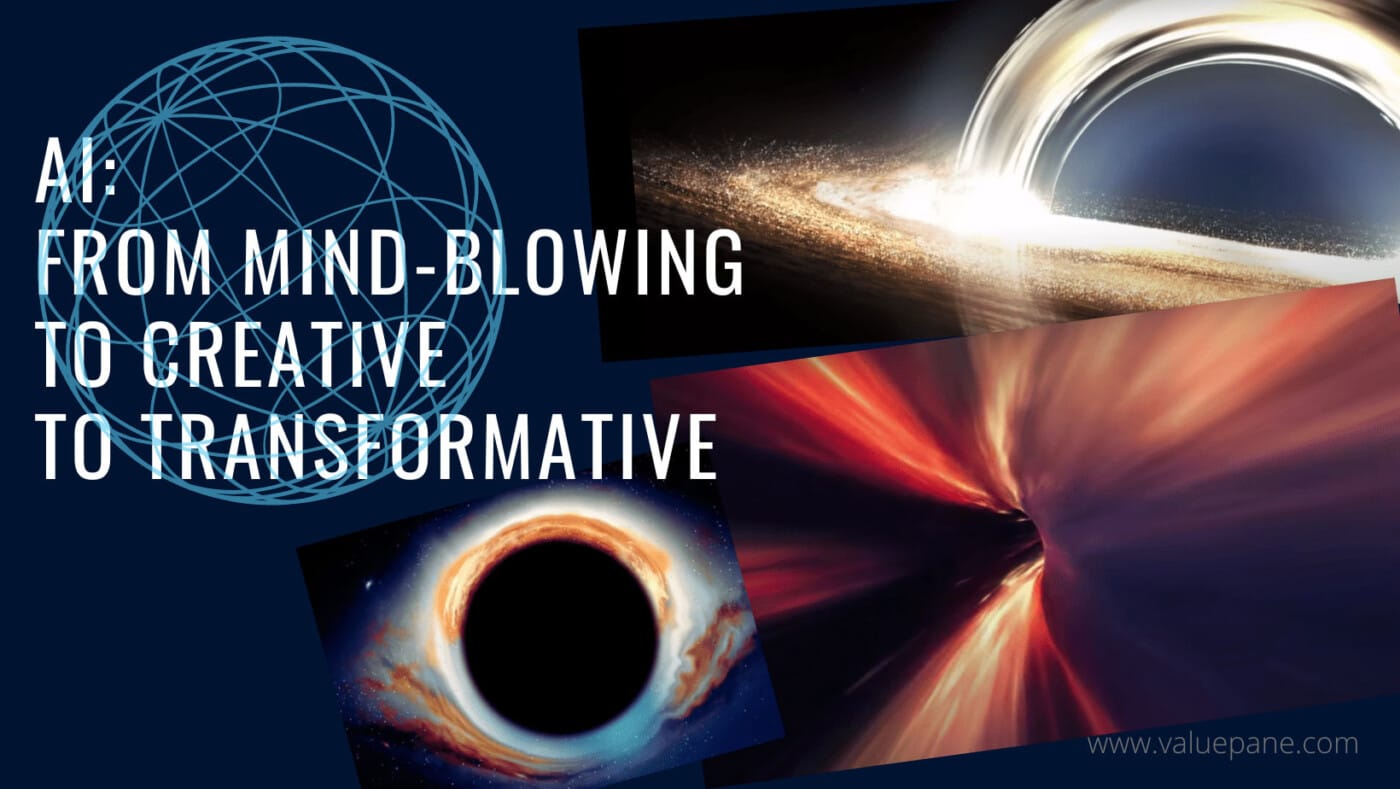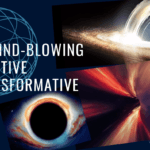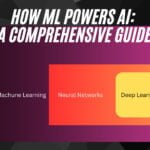(Artificial intelligence) AI technology is a powerful and pervasive that can do amazing, innovative, and impactful things that were once considered impossible or unimaginable. In this blog post, we will explore how AI can enhance human creativity, transform the way we work, and create new opportunities and challenges for us as individuals and as a society.

Table of Contents
What is AI technology and how does it work?
AI is the science and engineering of creating machines or systems that can perform tasks that normally require human intelligence, such as learning, reasoning, understanding, communicating, etc. AI technology can be divided into two main types: Narrow AI and General AI.
- Narrow AI is the type of AI that can perform specific tasks or solve specific problems, such as playing chess, recognizing faces, translating languages, etc. Narrow AI is based on rules, algorithms, or data that are predefined or learned by the machine or system.
- General AI is the type of AI that can perform any task or solve any problem that a human can do, such as writing novels, composing music, inventing new things, etc. General AI is based on self-awareness, creativity, or intuition that are inherent or acquired by the machine or system.
AI works by using various methods and techniques that are inspired by or mimicking human intelligence, such as:
- Machine learning (ML) is the method of AI that enables machines or systems to learn from data or experience without being explicitly programmed. ML can be further divided into three main types: supervised learning, unsupervised learning, and reinforcement learning.
- Supervised learning is the type of ML that enables machines or systems to learn from labeled data or examples. For instance, a machine or system can learn to classify images of cats and dogs by being given images with labels of “cat” or “dog”.
- Unsupervised learning is the type of ML that enables machines or systems to learn from unlabeled data or patterns. For instance, a machine or system can learn to cluster images of different animals by finding similarities or differences among them.
- Reinforcement learning is the type of ML that enables machines or systems to learn from their own actions and feedback. For instance, a machine or system can learn to play a game by trying different moves and getting rewards or penalties based on the outcomes.
- Deep learning (DL) is the technique of ML that enables machines or systems to learn from complex and high-dimensional data using multiple layers of artificial neural networks (ANNs). ANNs are mathematical models that simulate the structure and function of biological neural networks in the brain. DL can be used for various tasks such as natural language processing (NLP), computer vision (CV), speech recognition (SR), etc.
- NLP is the task of DL that enables machines or systems to understand and generate natural language texts or speech. For instance, a machine or system can learn to answer questions, summarize texts, write captions, etc. by using NLP techniques such as natural language understanding, natural language generation, etc.
- CV is the task of DL that enables machines or systems to understand and generate images or videos. For instance, a machine or system can learn to recognize objects, faces, emotions, etc. by using CV techniques such as image recognition, face recognition, emotion recognition, etc.
- SR is the task of DL that enables machines or systems to understand and generate speech sounds or signals. For instance, a machine or system can learn to transcribe speech to text, synthesize text to speech, translate speech to speech, etc. by using SR techniques such as speech recognition, speech synthesis, speech translation, etc.
- Generative AI is the type of AI that enables machines or systems to create new content or data that is not based on existing inputs but on learned patterns and rules. Generative AI can be used for various tasks such as image generation, text generation, code generation, etc.
- Image Generation is the task of generative AI that enables machines or systems to create realistic and novel images or videos by using generative models and algorithms such as generative adversarial networks (GANs), neural style transfer (NST), etc. For instance, a machine or system can learn to create images of animals, landscapes, faces, etc. by using IG techniques such as GANs, NST, etc.
- Text Generation is the task of generative AI that enables machines or systems to create coherent and relevant texts or speech by using generative models and algorithms such as transformers, recurrent neural networks (RNNs), etc. For instance, a machine or system can learn to create texts of stories, articles, captions, etc. by using TG techniques such as transformers, RNNs, etc.
- Code Generation is the task of generative AI that enables machines or systems to create functional and efficient code or programs by using generative models and algorithms such as neural code generation, neural program synthesis, etc. For instance, a machine or system can learn to create code of websites, apps, games, etc. by using Code Generation techniques such as Neural Code Generation, Neural Program Synthesis, etc.
AI and mind-blowing things it can already do today
Many of us may think that only after ChatGPT AI has set its footprint in human life. But the truth is that AI has been in use for quite sometime now; for example: Alexa, Siri, etc. And at the enterprise and research level much longer, for example Google, NVIDIA, etc.
With OpenAI giving the general public a free access to ChatGPT, the awareness, reach and popularity about AI has grown manifold.
Now let us take a look at where else artificial intelligence technology is already in use.
Healthcare : AI can diagnose diseases and recommend treatments based on data analysis and pattern recognition. For instance, IBM Watson Health can analyze medical images and reports to detect cancer and suggest the best course of action for patients and doctors.
Entertainment: AI can compose music and write lyrics based on generative models and algorithms. For example, OpenAI Jukebox can create original songs in various genres and styles by learning from a large corpus of music data.
Games: AI can play complex games and beat human champions based on reinforcement learning and self-play. For example, DeepMind AlphaGo can master the ancient game of Go by playing against itself millions of times and improving its strategy over time.
Art: AI can create realistic art and images based on generative adversarial networks (GANs) and neural style transfer. For example, NVIDIA GauGAN can turn simple sketches into photorealistic landscapes by learning from a database of natural images.
Content creation: AI can write high-quality content and generate headlines based on natural language generation (NLG) and transformers. For example, OpenAI GPT-3 can produce coherent and relevant texts on any topic or prompt by learning from a large corpus of web data.
These industries are not the only ones using AI but the fact is AI is being utilized by every business that can leverage profit from it. For example: space research, climate change, education, Small and Medium Enterprises (SMEs), law, and the list is growing by the day.
Basically that day is near when AI will be an integral part of your life without you even realizing it, just like using electricity today.
How AI can enhance human creativity
Creativity is the ability to produce new and valuable ideas or products that are original, useful, or surprising. Creativity can be divided into two main types: personal creativity and social creativity.
- Personal creativity is the type of creativity that is based on the individual’s cognitive, emotional, motivational, and personality factors. Personal creativity can be measured by various indicators such as fluency, flexibility, originality, elaboration, etc.
- Social creativity is the type of creativity that is based on the social and cultural factors that influence the individual’s creative process and product. Social creativity can be measured by various indicators such as novelty, usefulness, appropriateness, impact, etc.
AI can enhance human creativity by providing inspiration, experimentation, exploration, and evaluation. AI can help humans to:
- Generate new ideas by combining different modalities, genres, styles, cultures, etc. For example, a human musician can use AI to create new melodies or lyrics by mixing different musical elements or languages.
- Improve the quality of creative works by providing feedback, guidance, evaluation, and optimization. For example, a human writer can use AI to improve their grammar, spelling, punctuation, clarity, tone, etc. by using NLP techniques.
- Personalize creative experiences by catering to individual preferences, needs, and contexts. For example, a human learner can use AI to customize their learning content and pace by using ML techniques.
- Collaborate with other humans and machines across time, space, and disciplines. For example, a human designer can use AI to communicate, interact, and learn from other human or machine designers by using CV and SR techniques.
However, AI also faces some challenges and limitations in this domain. For instance:
- We need to respect the authorship, ownership, and recognition of human and machine creators. For example, we need to acknowledge the sources and contributions of human and machine creators in their creative works.
- We need to balance the originality, diversity, and quality of creative outputs and experiences. For example, we need to ensure that human and machine creators do not copy or plagiarize each other’s works or produce low-quality or irrelevant works.
- We need to address the ethical, legal, and social issues that arise from the use of AI for creativity. For example, we need to consider the potential impact of AI on human dignity, rights, values, culture, etc.
How AI can transform the way we work
Work is the activity that humans perform to produce goods or services that have value for themselves or others. Work can be divided into two main types: physical work and mental work.
- Physical work is the type of work that involves the use of physical skills or abilities such as strength, dexterity, coordination, etc. Physical work can be measured by various indicators such as speed, accuracy, efficiency, etc.
- Mental work is the type of work that involves the use of mental skills or abilities such as knowledge, intelligence, creativity, etc. Mental work can be measured by various indicators such as complexity, difficulty, quality, etc.
AI can transform the way we work by automating tasks that are repetitive, routine, or dangerous, and enhancing tasks that are complex, creative, or collaborative.
AI can help humans to:
- Automate tasks that are repetitive, routine, or dangerous by using computer vision (CV), speech recognition (SR), robotics (RO), etc. For example, AI can automate tasks such as moving packages in warehouses (CV + RO), transcribing speech to text (SR), detecting fraud and preventing cyberattacks (ML + DL), etc.
- Enhance tasks that are complex, creative, or collaborative by using natural language processing (NLP), image generation (IG), chatbots (CB), etc. For example, AI can enhance tasks such as creating original content and personalizing recommendations (NLP + IG), improving customer service and chat with humans (CB + NLP + SR), fostering innovation and collaboration (ML + DL + NLP + IG + CB), etc.
However, AI also has some potential impact on employment, such as:
- Displacing workers who perform tasks that are easily automated by AI, such as low-skill, low-wage, or low-value-added jobs. For example, according to a report by McKinsey Global Institute, AI could displace up to 375 million workers or 14% of the global workforce by 2030.
- Creating new jobs that require new skills or abilities that are complementary to AI, such as high-skill, high-wage, or high-value-added jobs. For example, AI could create up to 133 million new jobs or 9% of the global workforce by 2030.
- Changing the nature and structure of work, such as the tasks, roles, responsibilities, processes, outcomes, etc. of workers and organizations. For example, AI could enable workers and organizations to redesign their work architecture, redefine their work roles, reskill their workers, create a lifelong learning culture, enhance their labor market dynamism, provide income support, ensure health and well-being, foster inclusive growth, leverage technology for social good, and establish ethical principles.
By the way, AI also offers some opportunities and benefits for workers and organizations, such as:
- Increasing productivity, efficiency, and quality by automating tasks, optimizing processes, and improving outcomes. For example, AI could boost global GDP by 14% or $15.7 trillion by 2030.
- Fostering innovation, creativity, and competitiveness by generating new ideas, improving the quality of creative works, and personalizing creative experiences. For example, AI could create new markets and industries that are worth trillions of dollars.
- Enhancing collaboration, communication, and trust by facilitating communication, interaction, and learning from humans and machines. For example, AI could create new forms of social and professional networks that are more diverse and inclusive.
To adapt to the changing work environment and culture, workers and organizations need to:
- Develop new skills that are complementary to AI, such as critical thinking, problem-solving, creativity, emotional intelligence, etc.
- For example, workers and organizations can use online courses or platforms to learn new skills or update their existing skills.
- Embrace lifelong learning and continuous development by updating their knowledge and competencies regularly. For example, workers and organizations can use AI tools or platforms to provide feedback, guidance, evaluation, and optimization for their learning or development processes.
- Collaborate with machines effectively by understanding their strengths and limitations, establishing trust and empathy, and leveraging their potential. For example, workers and organizations can use AI tools or platforms to communicate, interact, and learn from machines or systems that can perform tasks or solve problems that they cannot do alone.
Video Resource
A video by Henrik Kniberg, that covers questions like what is generative AI, how does it work, how do I use it, what are some of the risks & limitations.
Conclusion
In this blog post, we have explored how AI can do amazing, innovative, and impactful things that were once considered impossible or unimaginable. We have also seen how AI can enhance human creativity, transform the way we work, and create new opportunities and challenges for us as individuals and as a society. We have concluded that AI is a powerful and pervasive technology that can augment our intelligence, enhance our productivity, improve our quality of life, and expand our horizons.
Before You Leave
If you are interested in learning more about AI and its applications, implications, and challenges, you can check out some of the following resources:
- The Best Free AI Courses and Certifications
- How generative AI can augment reality
- AI automation and the future of work
If you are interested in taking action on the topic of AI and its impact on work and society, you can check out some of the following initiatives:
- Partnership on AI
- World Economic Forum
- AI for Good
- AI for Good (This is not a repetition, it is a different URL)
I hope you enjoyed the read and came across something of value to share with your friends. If you have any comments or suggestions, please feel free to share them below. And if you have loved it do leave a review on Trustpilot. 😊





Just wish to say your article is as surprising The clearness in your post is just cool and i could assume youre an expert on this subject Fine with your permission allow me to grab your RSS feed to keep updated with forthcoming post Thanks a million and please keep up the enjoyable work
Wow amazing blog layout How long have you been blogging for you made blogging look easy The overall look of your web site is magnificent as well as the content
I will know, I thank for the information.
Thanks for the valuable information. I have used it.